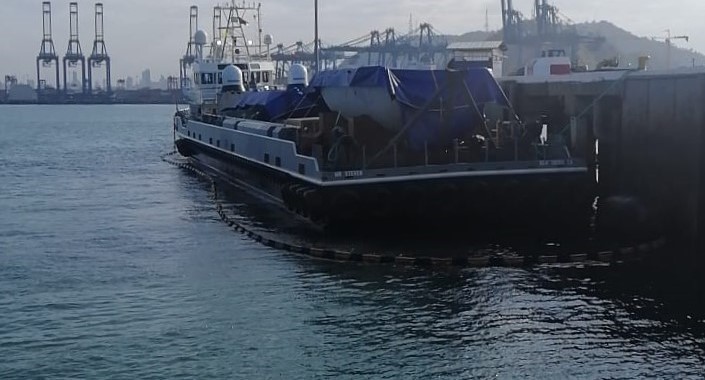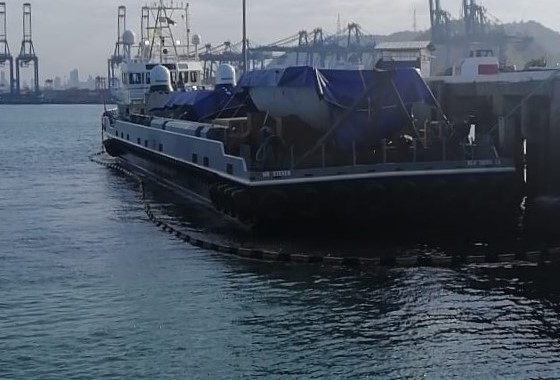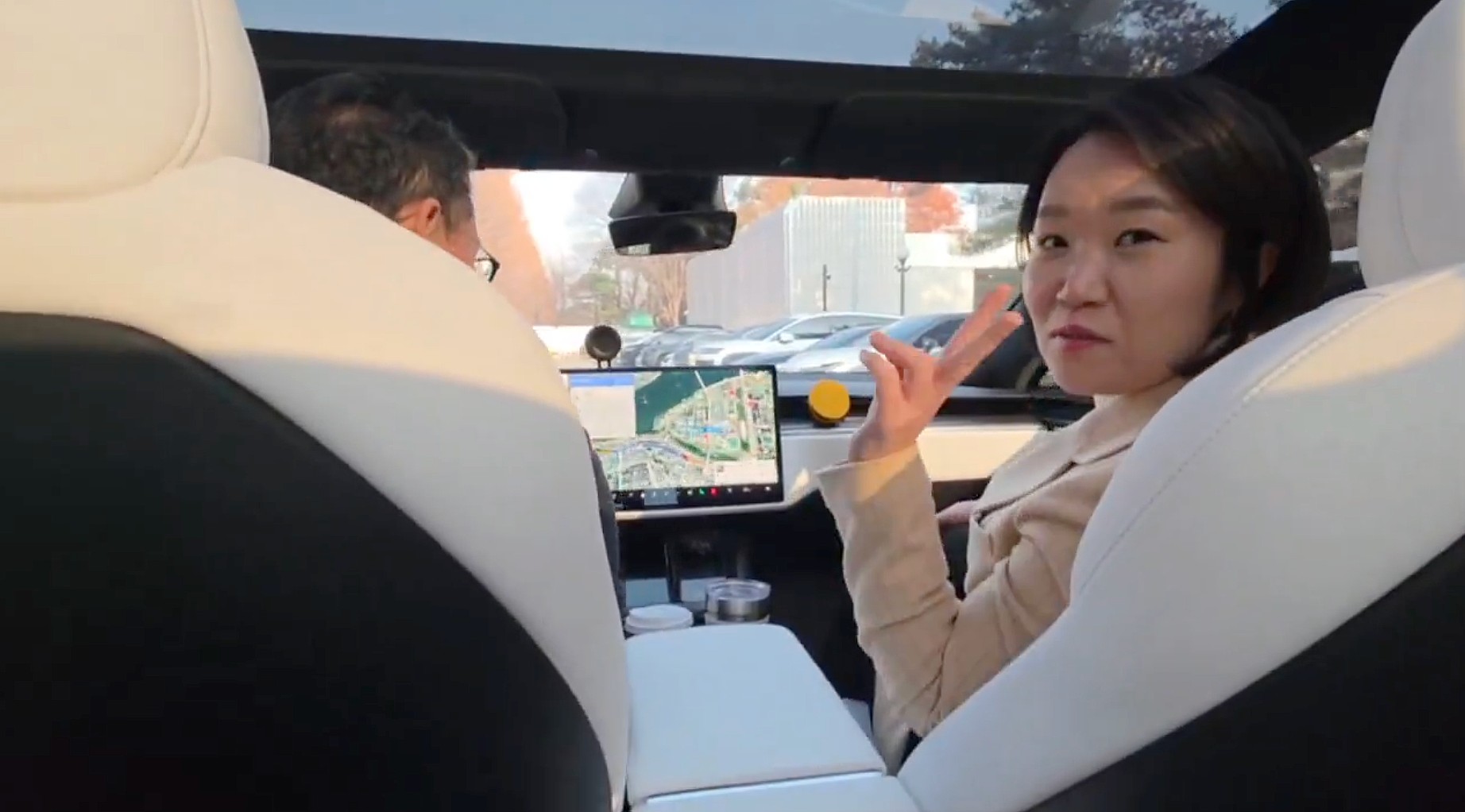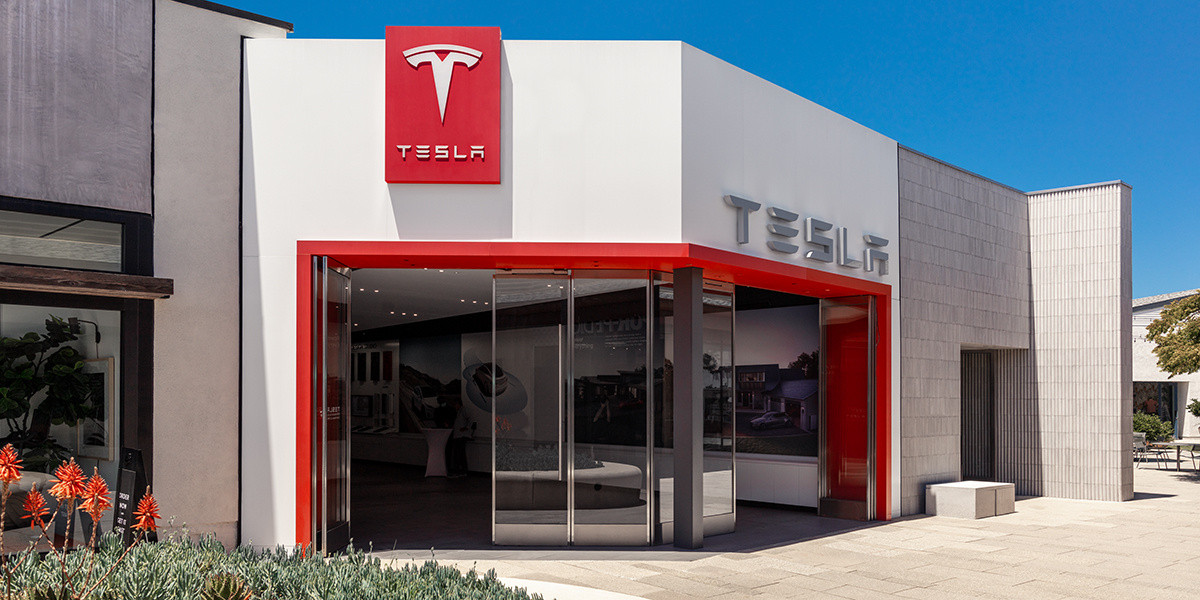

News
SpaceX’s Mr. Steven crosses Panama Canal on 5000 mile journey to Florida
Iconic SpaceX vessel Mr. Steven has completed a successful transit of the Panama Canal as of February 7th, leaving the fairing recovery ship approximately 3-4 days from arrival at its new home in Port Canaveral, Florida.
Mr. Steven’s move from the West Coast to the East Coast comes shortly after a series of controlled fairing recovery tests – dropped by helicopter before deploying a parafoil – brought the vessel closer than ever before to successfully snagging a Falcon fairing out of the air. Thanks to webcams at the landmark, Mr. Steven’s trip through the Panama Canal also revealed that his arms were uninstalled for the coast swap, while two fairing halves – covered in tarps – stood out on the ship’s large deck.
Aaaaand the grand finale, a gif of Mr. Steven’s transit through the Panama Canal’s first western lock (Miraflores). Probably the last we’ll see of him until Port Canaveral, with an ETA around ~4 days from now 🙂#SpaceX pic.twitter.com/DIus6K5hK5
— Eric Ralph (@13ericralph31) February 7, 2019
Although the presence of two fairing halves could be a sign of something else, it could indicate that SpaceX has plans to continue its controlled fairing drop/recovery tests, albeit this time in the Atlantic Ocean. Thanks to a sharp-eyed local observer, it can be observed that, while topped with tarps and safely secured, the fairing halves aboard Mr. Steven had no additional protection against sea spray and the elements over the course of a 5000+ mile (~8000 km) journey at a cruising speed of roughly 20 mph (~32 km/h). In other words, they are most certainly not going to be reused.
If not for reuse, then the only reason Mr. Steven would need to bring fairings to Florida is if there is some need for fairing recovery development hardware (halves that can be abused without opportunity cost), either for more basic mechanical and interface tests with fairings and nets or to continue SpaceX’s program of experimental drop testing.
Is your #MrSteven here in Panama @elonmusk and @SpaceX ? pic.twitter.com/GvTNGYQU9K
— Hugo Tello (@soyhugotello) February 6, 2019
Intriguingly, although SpaceX released a second video of “one” of Mr. Steven’s final West Coast catch tests, some basic sleuthing can easily determine that the test shown in the January 29th video probably occurred more than two weeks earlier, on January 10th. This means that one final helicopter drop test was performed (January 26th) before SpaceX departed Port of LA for Florida on the 29th. Some might conclude, then, that SpaceX’s latest drop tweet was more than a little coy, perhaps indicating that the results of the Jan 26 test may have been appreciably different than the extreme near-miss experienced on the 10th.
While the company’s history – combined with CEO Elon Musk’s welcome tendency of sharing good news almost as soon as he hears it – suggests that the Jan 26 test was probably not a success, SpaceX could be playing its development cards close to its chest when it comes to fairing recovery.
One of Mr. Steven’s final West Coast fairing recovery tests before shipping out for the East Coast. Wait for it… pic.twitter.com/A7q37Gpllu
— SpaceX (@SpaceX) January 30, 2019
Regardless, SpaceX clearly has no plans to end its experimental fairing recovery program with success so agonizingly within reach. Mr. Steven’s move to Florida sets the vessel up for a dramatic increase in available post-launch fairing recovery attempts at the same time as Falcon fairings likely still cost around $3 million apiece and continue to pose the same conundrum Musk raised in mid-2017.
“Imagine if we had a $6 million pallet of cash falling through the sky. Would we try to catch it? I think the answer is yes.” – Elon Musk, July 2017
Although the cost of SpaceX’s fairing recovery program is probably several tens of millions of dollars at this point, it seems probable that Musk would still stand behind his thought experiment. Assuming SpaceX can cost-effectively reuse fairings once recovery is assured, a development program costing upwards of $50-100M could be entirely recouped after just 10-20 dual fairing recoveries, compared to the 21 fairings SpaceX flew in 2018 alone. As long as Falcon 9 and Heavy are likely to continue operating for several more years (all but guaranteed), fairing recovery should still prove worthwhile if SpaceX can close the recovery gap within the next 6-12 months.
Check out Teslarati’s newsletters for prompt updates, on-the-ground perspectives, and unique glimpses of SpaceX’s rocket launch and recovery processes!

News
Tesla Full Self-Driving gets sparkling review from South Korean politician
“Having already ridden in an unmanned robotaxi, the novelty wasn’t as strong for me, but it drives just as well as most people do. It already feels like a completed technology, which gives me a lot to think about.”

Tesla Full Self-Driving got its first sparkling review from South Korean politician Lee So-young, a member of the country’s National Assembly, earlier this week.
Lee is a member of the Strategy and Finance Committee in South Korea and is a proponent of sustainable technologies and their applications in both residential and commercial settings. For the first time, Lee was able to utilize Tesla’s Full Self-Driving technology as it launched in the country in late November.
Her thoughts on the suite were complimentary to the suite, stating that “it drives just as well as most people do,” and that “it already feels like a completed technology.”
드디어 오늘, 서울에서 테슬라 FSD 체험 했습니다.
JiDal Papa님의 모델S 협찬에 힘입어^^ 파파님 정말 감사합니다.
국회 -> 망원시장 -> 홍익대 -> 국회 복귀 코스였고요.
이미 무인 로보택시를 타봐서 그런지 신기함은
덜했지만, 웬만한 사람만큼 운전을 잘하네요.이미 완성된 기술이라고… pic.twitter.com/8pAidHBpRG
— 이소영 국회의원 (Soyoung Lee) (@im_soyounglee) December 17, 2025
Her translated post says:
“Finally, today I got to experience Tesla FSD in Seoul. Thanks to the Model S sponsored by JiDal Papa^^, I’m truly grateful to Papa. The route was from the National Assembly -> Mangwon Market -> Hongik University -> back to the National Assembly. Having already ridden in an unmanned robotaxi, the novelty wasn’t as strong for me, but it drives just as well as most people do. It already feels like a completed technology, which gives me a lot to think about. Once it actually spreads into widespread use, I feel like our daily lives are going to change a lot. Even I, with my license gathering dust in a drawer, don’t see much reason to learn to drive a manual anymore.”
Tesla Full Self-Driving officially landed in South Korea in late November, with the initial launch being one of Tesla’s most recent, v14.1.4.
It marked the seventh country in which Tesla was able to enable the driver assistance suite, following the United States, Puerto Rico, Canada, China, Mexico, Australia, and New Zealand.
It is important to see politicians and figures in power try new technologies, especially ones that are widely popular in other regions of the world and could potentially revolutionize how people travel globally.
News
Tesla dispels reports of ‘sales suspension’ in California
“This was a “consumer protection” order about the use of the term “Autopilot” in a case where not one single customer came forward to say there’s a problem.
Sales in California will continue uninterrupted.”

Tesla has dispelled reports that it is facing a thirty-day sales suspension in California after the state’s Department of Motor Vehicles (DMV) issued a penalty to the company after a judge ruled it “misled consumers about its driver-assistance technology.”
On Tuesday, Bloomberg reported that the California DMV was planning to adopt the penalty but decided to put it on ice for ninety days, giving Tesla an opportunity to “come into compliance.”
Tesla enters interesting situation with Full Self-Driving in California
Tesla responded to the report on Tuesday evening, after it came out, stating that this was a “consumer protection” order that was brought up over its use of the term “Autopilot.”
The company said “not one single customer came forward to say there’s a problem,” yet a judge and the DMV determined it was, so they want to apply the penalty if Tesla doesn’t oblige.
However, Tesla said that its sales operations in California “will continue uninterrupted.”
It confirmed this in an X post on Tuesday night:
This was a “consumer protection” order about the use of the term “Autopilot” in a case where not one single customer came forward to say there’s a problem.
Sales in California will continue uninterrupted.
— Tesla North America (@tesla_na) December 17, 2025
The report and the decision by the DMV and Judge involved sparked outrage from the Tesla community, who stated that it should do its best to get out of California.
One X post said California “didn’t deserve” what Tesla had done for it in terms of employment, engineering, and innovation.
Tesla has used Autopilot and Full Self-Driving for years, but it did add the term “(Supervised)” to the end of the FSD suite earlier this year, potentially aiming to protect itself from instances like this one.
This is the first primary dispute over the terminology of Full Self-Driving, but it has undergone some scrutiny at the federal level, as some government officials have claimed the suite has “deceptive” naming. Previous Transportation Secretary Pete Buttigieg was vocally critical of the use of the name “Full Self-Driving,” as well as “Autopilot.”
News
New EV tax credit rule could impact many EV buyers
We confirmed with a Tesla Sales Advisor that any current orders that have the $7,500 tax credit applied to them must be completed by December 31, meaning delivery must take place by that date. However, it is unclear at this point whether someone could still claim the credit when filing their tax returns for 2025 as long as the order reflects an order date before September 30.

Tesla owners could be impacted by a new EV tax credit rule, which seems to be a new hoop to jump through for those who benefited from the “extension,” which allowed orderers to take delivery after the loss of the $7,500 discount.
After the Trump Administration initiated the phase-out of the $7,500 EV tax credit, many were happy to see the rules had been changed slightly, as deliveries could occur after the September 30 cutoff as long as orders were placed before the end of that month.
However, there appears to be a new threshold that EV buyers will have to go through, and it will impact their ability to get the credit, at least at the Point of Sale, for now.
Delivery must be completed by the end of the year, and buyers must take possession of the car by December 31, 2025, or they will lose the tax credit. The U.S. government will be closing the tax credit portal, which allows people to claim the credit at the Point of Sale.
🚨UPDATE: $7,500 Tax Credit Portal “Closes By End of Year”.
This is bad news for pending Tesla buyers (MYP) looking to lock in the $7,500 Tax Credit.
“it looks like the portal closes by end of the year so there be no way for us to guarantee the funds however, we will try our… pic.twitter.com/LnWiaXL30k
— DennisCW | wen my L (@DennisCW_) December 15, 2025
We confirmed with a Tesla Sales Advisor that any current orders that have the $7,500 tax credit applied to them must be completed by December 31, meaning delivery must take place by that date.
However, it is unclear at this point whether someone could still claim the credit when filing their tax returns for 2025 as long as the order reflects an order date before September 30.
If not, the order can still go through, but the buyer will not be able to claim the tax credit, meaning they will pay full price for the vehicle.
This puts some buyers in a strange limbo, especially if they placed an order for the Model Y Performance. Some deliveries have already taken place, and some are scheduled before the end of the month, but many others are not expecting deliveries until January.








